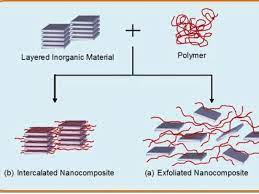
There is a need for mobile power sources in important civilian and military applications. A technical solution to this problem can be based on the use of power-accumulating substances with chemicothermal effect, in particular the use of hydrogen generators which function on the basis of self-heating effect of electroexplosive aluminium nanoparticles (ALEX) in water.
The results of [1-7] show that interaction of 1 kg of electroexplosive aluminium nanomaterial powder with water produces 1,244.5 liters of hydrogen which give 13.43 MJ of heat when burnt. The effectiveness of such hydrogen production process is higher than in case of electrolysis – aluminium nanomaterial powder is 100% oxidized, i. e. the material is completely used.
The findings of [1-7] show that the characteristics of thermal conditions of interaction between aluminium nanomaterial powder and water create new effects which have been unknown for reactions involving coarse aluminium powders. First of all, it is the effect of nanoparticles self-heating to temperatures exceeding the temperature of surrounding water by several hundred degrees.
When using commercial aluminium powder of micron size, hydrogen release rate is only 0.138 ml per second for 1 g of powder. Thus, only 20-30% of source powder turn into the final product – a mixture of aluminium oxides and hydroxides. Studies have revealed that aluminium nanomaterial powder exceeds conventional commercial micron-sized powders by its reactivity. At the same time, hydrogen release rate is 3 ml per second for 1 g of powder when aluminium nanomaterial powder interacts with distilled water at 60 °С. At 80 °С, the rate is 9.5 ml per second for 1 g of powder, which 70 times exceeds hydrogen release rate during hydrothermal synthesis. One more advantage of using nanomaterial powder in this reaction is that the degree of aluminium transformation is 98-100% (depending on temperature). Moreover, the introduction of even small amounts of alkali into distilled water leads to a significant reaction rate increase: rising pH of solution up to 12 increases hydrogen release rate up to 18 ml per second for 1 g of powder at 25 ° C. When dissolving micron-sized aluminium in a solution containing 8 g/l of NaOH, hydrogen release rate is only 1 ml per second for 1 g of powder at the same temperature. This data indicate that electroexplosive aluminium nanomaterial powder , in contrast to compact aluminium and coarse commercial powders, react with water at high rate and with high transformation degree of approximately 100%; which means their application would allow producing hydrogen at a sufficient rate under regular conditions.
REFERENCES:
1. Proskurovskaya L. T. Physical-chemical properties of electroexplosive ultrafine aluminium powders: Thesis of candidate of chemistry – Tomsk, 1988. – 155 p.
2. Ilyin A. P., Gromov A. A. Combustion of aluminium and boron in ultrafine state. -Tomsk: Publishing House of Tomsk University, 2002. – 154 p.
3. Lyashko A. P. Peculiarities of interaction with water and structure of submicron aluminium powders. Thesis of candidate of technical sciences. – Tomsk, 1988. – 178 p.
4. Godymchuk A. Y., Ilyin A. P., Astankova (Zykova) A. P. Aluminium nanomaterial powder oxidation by heating in liquid water // TPU Proceedings. 2007. Vol. 310. No. 1. P. 102-104.
5. Astankova (Zykova) A. P., Ilyin A. P., Godymchuk A. Y. Influence of hot hydrogen on the process of water boiling // TPU Proceedings. 2007. Vol. 310. No. 3. P. 73-77.
6. Astankova (Zykova) A. P., Godymchuk A. Y., Gromov A. A.., Ilyin A. P. About self-heating kinetics in reaction of aluminium nanomaterial powder with liquid water // Journal of Physical Chemistry, 2008, Vol. 82, No. 9, P. 1-9
